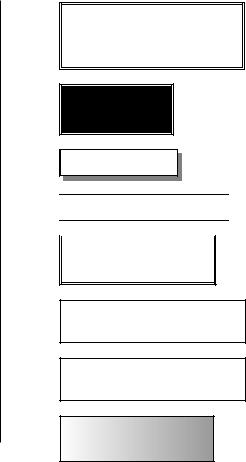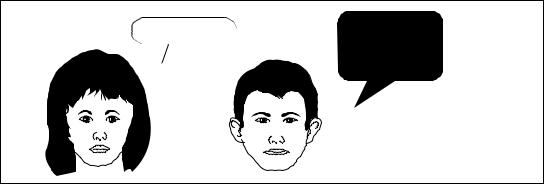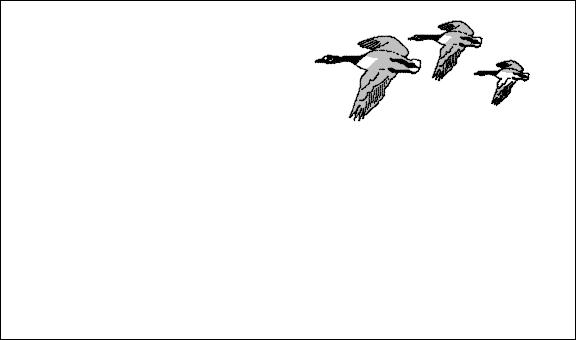
ВАЖНО КЕТ ЭКЗАМЕН 9780521528139ws
.pdf
Cambridge
Key English Test 2
W I T H A N S W E R S
Examination papers from University of Cambridge ESOL Examinations: English for Speakers of Other Languages

P U B L I S H E D B Y T H E P R E S S S Y N D I C A T E O F T H E U N I V E R S I T Y O F C A M B R I D G E
The Pitt Building, Trumpington Street, Cambridge, United Kingdom
C A M B R I D G E U N I V E R S I T Y P R E S S
The Edinburgh Building, Cambridge CB2 2RU, UK
40 West 20th Street, New York, NY 10011–4211, USA
477 Williamstown Road, Port Melbourne, VIC 3207, Australia Ruiz de Alarcón 13, 28014 Madrid, Spain
Dock House, The Waterfront, Cape Town 8001, South Africa
http://www.cambridge.org
© Cambridge University Press 2003
This book is in copyright, which normally means that no reproduction of any part may take place without the written permission of Cambridge University Press. The copying of certain parts of it by individuals
for use within the classroom, however, is permitted without such formality. Pages which are copiable without further permission are identified by a separate copyright notice:
© UCLES K&J Photocopiable
First published 2001
New edition 2003
Printed in the United Kingdom at the University Press, Cambridge
Typeface: Helvetica 10/13 System: QuarkXPress® [OD&I]
A catalogue record for this book is available from the British Library
ISBN 0 521 52813 5 Student’s Book with answers
ISBN 0 521 52812 7 Student’s Book
ISBN 0 521 52814 3 Teacher’s Book
ISBN 0 521 52815 1 Cassette
ISBN 0 521 52816 X Set of 2 Audio CDs
Contents
To the student |
1 |
|
Test 1 |
Paper 1 |
2 |
|
Paper 2 |
13 |
|
Paper 3 |
19 |
Test 2 |
Paper 1 |
20 |
|
Paper 2 |
31 |
|
Paper 3 |
37 |
Test 3 |
Paper 1 |
38 |
|
Paper 2 |
49 |
|
Paper 3 |
55 |
Test 4 |
Paper 1 |
56 |
|
Paper 2 |
67 |
|
Paper 3 |
73 |
Visual materials for Paper 3 |
74 |
|
Test 1 |
Key |
82 |
Test 2 |
Key |
90 |
Test 3 |
Key |
98 |
Test 4 |
Key |
106 |
Sample answer sheets |
114 |
|
Acknowledgements
The publishers are grateful for permission to reproduce copyright material. It has not always been possible to identify the sources of all the material used, and in such cases the publishers would welcome information from the copyright owners.
Illustrations by Chartwell Illustrators.
Design concept by Peter Ducker MSTD
Cover design by Dunne & Scully
The cassette/CDs which accompany this book were recorded at Studio AVP, London.
To the student
This book is for students preparing for University of Cambridge ESOL Examinations Key English Test (KET). It contains four complete tests based on the new test format from March 2004.
What is KET?
KET is an examination for speakers of other languages studying English. It tests Reading, Writing, Listening and Speaking. The KET examination is at Cambridge Level One (Council of Europe Level A2).
Paper 1 |
1 hour 10 minutes |
Reading and Writing |
9 parts |
50% of total marks |
|
|
|
|
|
Paper 2 |
approx 30 minutes |
Listening |
5 parts |
25% of total marks |
|
|
|
|
|
Paper 3 |
8–10 minutes |
Speaking |
2 parts |
25% of total marks |
|
|
|
|
|
How do I prepare for KET?
It is important to know what type of questions are in the KET examination. Doing the tests in this book will help you. Practise putting your answers on the sample answer sheets on pages 82–84 (you may photocopy these pages). This will help you to understand what you have to do in the real test.
Reading: Read some books in simple English from your library or local bookshop. Try to guess the words you don’t know before you use a dictionary to check them. Also, use an English learner’s dictionary when you study. If you live in a tourist area, there may be some signs or notices in English outside restaurants and shops or in railway stations and airports. Read these and try to understand them.
Writing: Write short letters or messages in English to a friend who is learning English with you or find an English-speaking pen-friend/e-friend to write to. Write about your daily life (your home, work or school and your family). If you go on holiday, write postcards in English and send them to your English-speaking friends.
Listening: Listen to the cassettes or CDs that come with English coursebooks so you can hear different people speaking English. Watch English-language programmes on television and listen to English on the radio if possible.
Speaking: Talk in English with friends who are studying with you. Ask each other questions about your daily lives, your future plans and about other towns, countries or places you have visited.
We hope this book helps you when you take the KET examination. Good luck!
1

Test 1
PAPER 1 READING AND WRITING (1 hour 10 minutes)
PART 1
QUESTIONS 1–5
Which notice (A–H) says this (1–5)?
For questions 1–5, mark the correct letter A–H on the answer sheet.
EXAMPLE |
ANSWER |
0 This is broken. |
C |
|
|
1Children pay less than adults here.
2Be careful because this will burn.
3We don’t want any money yet.
4Things are cheaper here.
5You must pay with cash.
A
SUMMER SALE LOW PRICES IN ALL DEPARTMENTS
B
FIRE DOOR
KEEP CLOSED
C
LIFT NOT WORKING
D
 TOY SHOP NOW OPEN
TOY SHOP NOW OPEN 

E
BUY NOW
PAY NEXT YEAR!
FKeep this nightdress away from fire!
GWe do not take cheques or credit cards.
H
Under 12s
HALF PRICE
2
Paper 1: Reading and Writing
PART 2
QUESTIONS 6–10
Read the sentences (6–10) about going to the zoo.
Choose the best word (A, B or C) for each space.
For questions 6–10, mark A, B or C on the answer sheet.
EXAMPLE |
|
|
|
|
|
ANSWER |
||
0 |
On Sunday, Tim |
.................................. |
up early because he was going to the zoo. |
B |
||||
|
A |
stood |
B |
woke |
C |
went |
|
|
|
|
|
|
|||||
6 |
He put some biscuits and an apple in a bag for his .................................. |
. |
|
|||||
|
A |
meat |
B |
lunch |
C |
dish |
|
|
7 |
He took a bus to the zoo and got off outside the .................................. |
entrance. |
|
|||||
|
A |
high |
B |
important |
C |
main |
|
|
8 |
He .................................. |
|
at the monkeys eating some bananas. |
|
|
|||
|
A |
enjoyed |
B |
watched |
C |
laughed |
|
|
9 |
The lions were sleeping under a tree because it was very .................................. |
. |
|
|||||
|
A |
hot |
B |
tired |
C |
full |
|
|
10 |
Tim |
.................................. |
some photos of the elephants. |
|
|
|||
|
A |
put |
B |
took |
C |
made |
|
|
3

Test 1
PART 3
QUESTIONS 11–15
Complete the five conversations.
For questions 11–15, mark A, B or C on the answer sheet.
EXAMPLE |
How are you? |
A |
I’m 18. |
ANSWER |
|
|
|
|
|
|
|
B |
I’m Peter. |
C |
|
|
|
|
|
|
|
C |
I’m fine. |
|
11 |
John’s broken this plate. |
A |
That’s very good. |
|
|
B |
Here you are. |
|
|
C |
It doesn’t matter. |
12 |
Is this your watch? |
A |
It’s three o’clock. |
|
|
B I think it’s Dave’s. |
|
|
|
C I’m sorry I’m late. |
|
13 |
Can I have a sandwich? |
A |
Yes, of course. |
|
|
B |
Yes, it is. |
|
|
C |
Yes, that’s right. |
14 |
How many people were in the café? |
A |
Not much. |
|
|
B |
A few. |
|
|
C |
A little. |
15 |
We’re from London. |
A |
Not at all. |
|
|
B |
Yes, please. |
|
|
C |
How interesting. |
4

Paper 1: Reading and Writing
QUESTIONS 16–20
Complete the conversation about a flat.
What does Ben say to Ann?
For questions 16–20, mark the correct letter A–H on the answer sheet.
EXAMPLE |
ANSWER |
|
Ann: |
279616, Ann Beaton speaking. |
|
Ben: |
0 ..................... |
D |
|
|
|
Ann: |
Oh yes, in the Evening Post? |
Ben: |
16 ..................... |
Ann: |
£300 a month. |
Ben: |
17 ..................... |
Ann: |
Two, both of them with double beds. |
Ben: |
18 ..................... |
Ann: |
Yes. It’s quite small, but there are some |
|
nice plants in it. |
Ben: |
19 ..................... |
Ann: |
I’m afraid not, but you can park outside on |
|
the street. |
Ben: |
20 ..................... |
Ann: |
Of course – is tomorrow all right? At about |
|
10 a.m.? |
Ben: |
Yes, that’ll be fine. So I’ll see you |
|
tomorrow. Goodbye. |
AHow many bedrooms does it have?
BThat’s right. How much is it?
COK. Can I come and see it?
DHello, I’m phoning about your advertisement for a flat.
EIs there a bus stop near the flat?
FDoes it have a garden?
GHow many beds are there?
HAnd is there a garage?
5

Test 1
PART 4
QUESTIONS 21–27
Read the article about some birds.
Are sentences 21–27 ‘Right’ (A) or ‘Wrong’ (B)?
If there is not enough information to answer ‘Right’ (A) or ‘Wrong’ (B), choose ‘Doesn’t say’ (C).
For questions 21–27, mark A, B or C on the answer sheet.
CANADA GEESE
Canada Geese are large blue and white birds. When autumn arrives, they have to fly south where the weather is warmer. The winters are so cold in Canada that the birds die if they stay there.
Last spring, Bill Lishman found sixteen young Canada Geese on his farm. They had lost their parents. Bill thought, ‘These young birds won’t know what to do in the autumn.’ Bill had a small plane and he decided to teach the birds to follow him. All through the summer, he went on short trips in his plane
and the young geese flew after him.
When the cold weather arrived in autumn, Bill flew to Virginia in the United States, 600
miles south of his home in Canada. The geese followed him all the way. Bill left the geese in Virginia and he returned home.
This spring, Bill was waiting for the birds to come back. They didn’t arrive, so Bill flew to Virginia to get them. He looked for them for two weeks but he couldn’t find them.
When he arrived back home, Bill found the geese waiting for him. They had found their way home without him!
6
